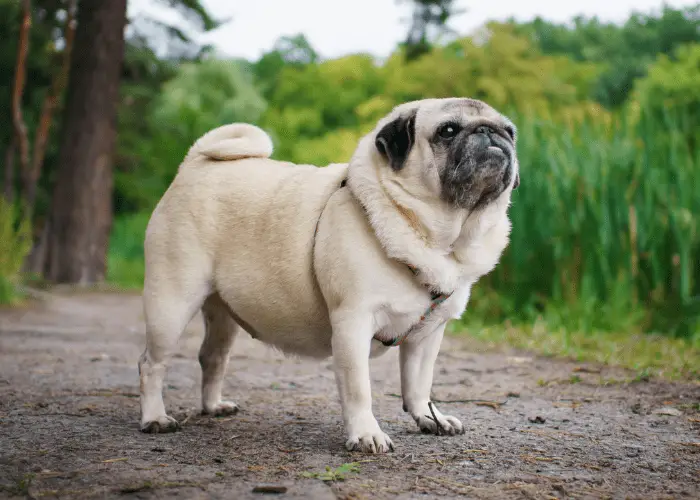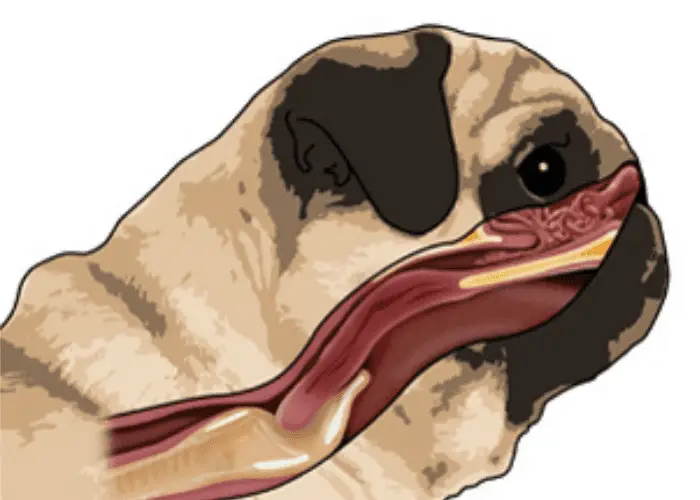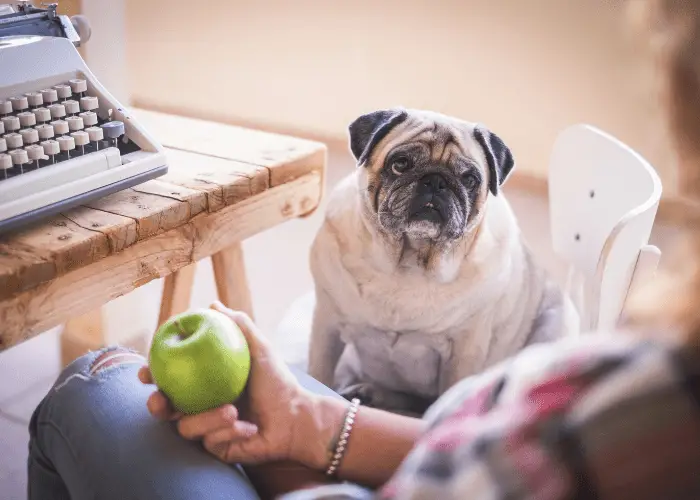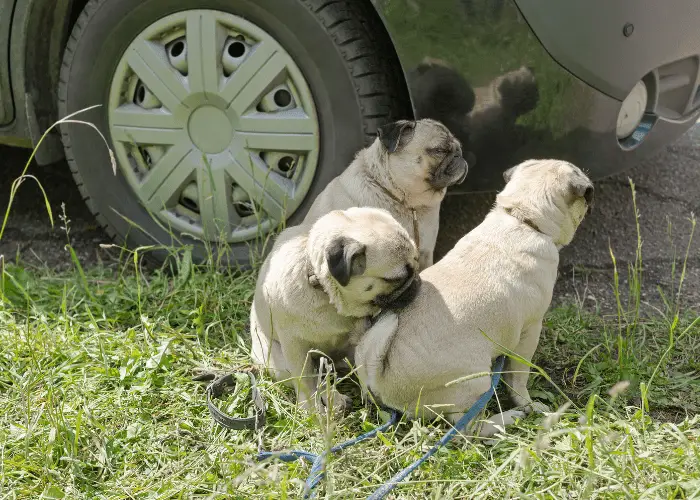Some dogs aren’t too crazy about being outdoors for long, while others would spend night and day outside if they had the opportunity making them classified as outdoor dogs. But can a Pug be an outside dog?
Pugs are not outside dogs. They’re sensitive to hot and cold conditions and risk overheating or getting too cold when outdoors for too long. If it’s a “room temperature” day outside, then those factors aren’t at play, but they’re still a Pug- curious and bold, which can lead to getting into trouble.
Just because Pugs are not fit to be outdoor dogs doesn’t mean they need to be couped in the house all day. However, Pugs should only be outside for intervals of about 15-20 minutes per stretch, depending on the weather.
Pugs Like To Go Outside

Just because they’re not outside dogs doesn’t mean they might not want to be. Pugs tend to be carefree for their safety and wellbeing (as are most breeds).
Rather than realizing that it’s shivering from the cold or panting into heat exhaustion, it would most likely sit down to relax rather than make an effort to get inside where it would be most comfortable. That is, of course, unless it’s been trained to do so.
There are exceptions, but generally speaking, Pugs enjoy everything that goes on outside. They like to run around for short amounts of time. They’ll play in the snow, run around and play with the kids or other pets, or find a place to sit and observe everything around it.
The Weather, Pugs, And Obstructive Airway Syndrome (BOAS)

The most obvious of all reasons why Pugs don’t do well outside for long stretches is the weather itself.
Whichever way the thermometer swings, extremes for a Pug are in a much tighter temperature circle than humans or other dog breeds.
Pugs are Brachycephalic
Pugs are known as Brachycephalic dogs. This is due to being bred over time to wind up with a deformed skull structure, cramming all of the soft tissue breathing apparatus into a tighter area.
This is where the Obstructive Airway Syndrome becomes an issue for the Pug.
When a Pug gets overexcited (such as shivering from the cold for too long) or too hot, breathing becomes extremely difficult.
Snorts and snarls ensure that they are due to being Brachycephalic. Though it may sound funny coming from such a little dog, it’s not funny, as it’s the dog struggling to get oxygen into its system.
It is much easier to monitor and control your dog’s activity when indoors, where it’s more comfortable to breathe (hopefully) than it would be out in the weather.
Though Pugs can have waking snores and snorts by sitting on the couch watching TV, it only worsens the dog when it becomes taxed through external conditions such as the weather.
[ Check Out My Article About Non-Brachycephalic Pug Now! ]
People Love Pugs

If you take your Pug out for walks around other people, it doesn’t take long to figure out that people generally love Pugs. Some people love pugs so much, and they may decide that your Pug may fit better in their home than in yours.
Dog thievery is a real thing, particularly for more expensive dogs. Leaving your dog outside for long periods can at some point attract the wrong kind of attention.
Pugs Are A Companion Breed

The Pug has been a companion breed for centuries. They were bred to be so, dating back to 400 BC.
Originally, they were bred to be companions for the wealthy and the Royalty of China. They are famous in Asia, Europe, and the Americas today.
So, they are perfectly fit and accustomed to being up close and personal with their owners, as has been the case for thousands of years. Having said that, there isn’t much companionship going on with their owners when being left outdoors.
It is true that other friendly breeds of dog pair up nicely with the Pug, able to keep it in good company and someone to play with, but a Pug needs its owner. They can be affectionate to an entire household and tend to cling to one person of the bunch.
This is the “companion” that has been thoroughly bred into its system. All said, the Pug being left outside apart from its owners goes against everything it was bred to be.
Tires and other Dangerous Problems

Vehicles
Pugs are known to be tire chasers. Not all will take chase, but a good amount of untethered and unfenced Pugs has been either harmed or killed by chasing bypassing vehicles. They are going after tires in particular.
As aforementioned, Pugs tend to give little thought to their safety. They can throw caution to the wind and act out on a whim if they feel the occasion calls for it. Passing traffic can be one of those things that cause the Pug to switch gears into fetch or attack mode.
Going Astray
If a Pug happens to either dig under a fence or is otherwise free to roam, their “living in the moment” personality can cause them to get lost.
This depends on whether or not something has caught their interest enough to lose themselves for a little while.
Fences are not an end-all solution for breeds like Pugs, and this is also true for most companion-type dogs who are left alone outside. They get anxious, nervous, or bored and will often wind up looking for chinks in the armor of their surroundings.
When all else fails, digging is always an option, which Pugs have no problem doing. There’s little more heartbreaking than losing your dog, so please bear this in mind before deciding to leave your dog outside for extended periods.
Final Thoughts

Some folks find it cruel to keep dogs outside and never allow them into the home. Others find it a good idea, as they believe that it is a healthier, more natural environment for dogs (cats too).
Being an outdoor dog is not a natural habitat for most, if not all, companion breeds. Pugs have thousands of years’ worth of evidence that they are at their best alongside owners in the dwelling.
If you’re looking for an outdoor dog, there are a ton of them out there to choose from. However, if that is the case, then a Pug is not the right choice of breed for you.

